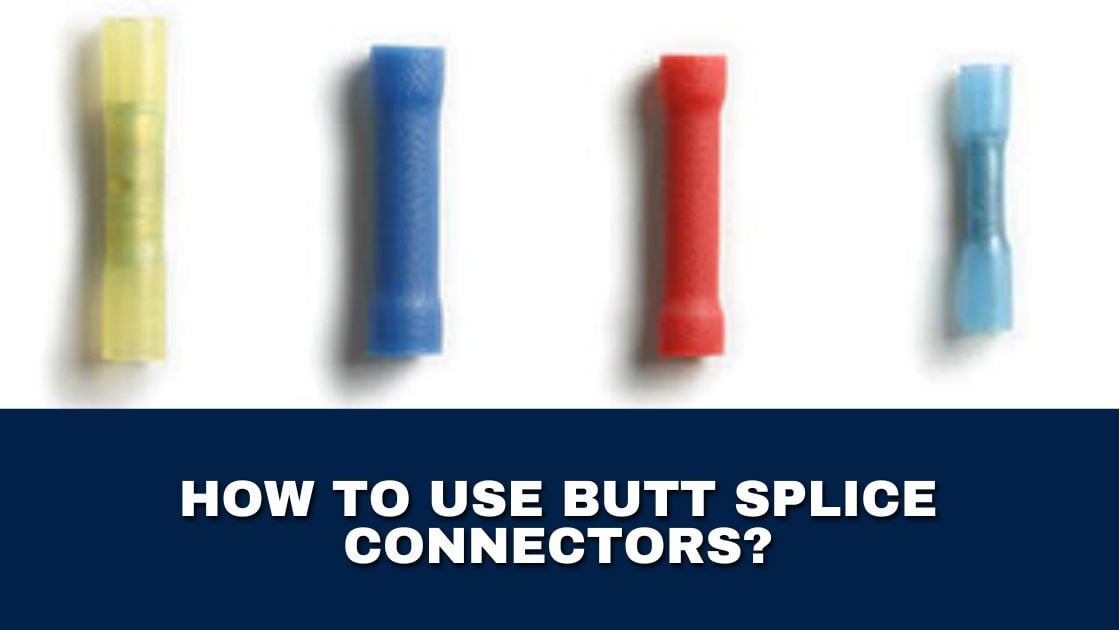
Butt splice connectors are a common way to connect one wire to another wire in electrical wiring applications. A butt splice connector provides a compression type electrical connection between two opposing wire ends. The design of the butt connector makes it possible to connect multi-conductor cables, whether it is a standard class B single strand wire, or a fine-strand multi-wire cable. Both stranded wire or solid wires can be safely spliced together with an insulated butt connector. The intention is to provide a seamless electrical connection between two separate wires. A butt connector provided by Electrical Basics ensures an electrical current can pass safely from one wire to the other as connected in an end on end configuration. A butt splice connector is also referred to as ‘barrel splice’ in the electrical industry.
A butt splice connector provides the means to connecting end wires to become one seamless, and effective wiring solution. Butt splicers have very high connectivity that sustains the electrical current that passes through it. They are easy and fast to install, providing a solid connection that can last as long as other methods of electrical connection on most applications.
Compression that is attained by crimping the butt connector is key to getting a solid connection. Crimping pliers are the best way to crimp the insulated connector together to provide a safe and secure wire connection. If wires become loose or pull apart, a new butt connector can be quickly secured by cutting new wire ends, removing a portion of the sheath surrounding the wires and crimping together a new butt splice connection. It is a fast and reliable method to first, creating an electrical connection, and repairing an electrical connection between wires. Before doing any repair of electrical wiring, remember to turn off the electricity so you don’t get hurt.
Use The Correct Size & Color Connector
Butt splice connectors come in a variety of colors and material types. It is important to understand what type and size connector you need before you begin so you don’t damage the connector or create an unsafe electrical connection. A color code is assigned to the connectors to indicate a range of wire gauges that should be used with each one.
Red is for 18-22 gauge wire, Blue is for 14-16 gauge wire, and Yellow is for 10-12 gauge wires.
Next, Determine What Type Of Butt Spice Connector Is Best For Your Application
There are insulated and non-insulated electrical terminal options. The easiest and most recommended connector to use are insulated terminals because they provide a safe means to handle voltages up to 600V, and are approved to UL/CUL standards. Most widely used are insulated connectors because they are usually designed for copper cables, can withstand higher voltages, and are tin plated for resistance to corrosion.
The butt splices you’ll need depend on the wire size, single or multi-wire stranding, wiring material and installation factors. There are three options that satisfy most requirements; Vinyl Insulated Butt Splices, Nylon Insulated Butt Splices and Heat Shrink Insulated Butt Splices.
Vinyl Insulated Butt Splices
Vinyl butt splices are insulated and typically used for small wires, such as wire sizes from #10 - #22 AWG (the standardized wire gauge system used in North America is the American Wire Gauge that dictates the diameters of round, solid, nonferrous, electrically conducting wire). The insulation and vinyl sheath replaces the need for taping, and is most commonly used for small wire applications. The seamless barrel type of a vinyl butt connector is adequate for most wire connections and is the most economical option.
Nylon Insulated Butt Splices
Nylon is a more rugged option over vinyl because it provides higher temperature resistance and is resistant to solvents. It can have either a flared or straight insulator end opening and provides a maximum strength connection.
Heat Shrink Insulated Butt Slices
The heat shrinkable insulation has an adhesive liner which helps to seal the splice when exposed to a temperature that will heat shrink the insulation. These are used most in instances where wire connections are subject to outdoor or environmental applications such as moisture and temperature differences.
Connecting The Wires To The Butt Splice Connector
Now you can see that it is necessary to understand what type of electrical connection you are going to need with the wires that are used.
Below are some tips to determine how to achieve a safe and successful electrical connection using Butt Splice Connectors:
1. Locate the end sections of the wire and strip the vinyl sheath until a specified length of wire is exposed
2. Determine the wire size (gauge) and correspond that to the correct color of butt splice connector
3. Make sure the electricity is shut off before handling any electrical wiring at the source. Also check that no electrical charge is present.
4. Slide the butt connector over the stripped wire ends covering the exposed wires. The metal sleeve inside the connector should completely cover the wires on each end.
5. Use a crimping tool to crimp the metal connector tightly to the wires, creating a solid mass inside the connector barrel.
6. Once both ends of the connector have been crimped to the metal connector, make sure the insulated sheath completely covers the wires. This will seal the connection and prevent contact with other surfaces and provide resistance to environmental conditions.
Depending on the application and where it is used, a butt splice connector is effective when installed correctly. If you have any reservations about handling electrical wiring, it is always best to consult with an experienced electrician. You can also contact the customer support staff at Electrical Basics with any questions you have in determining which butt splice connector or other electrical terminal to use for your particular application.